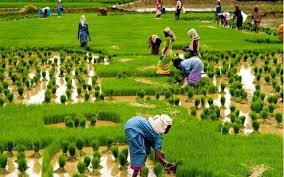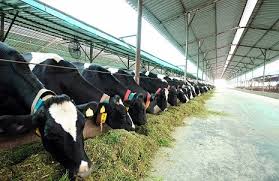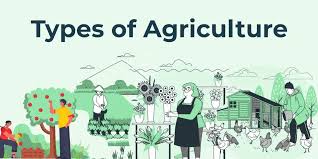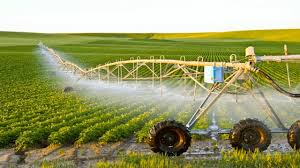Originally, the term agriculture is derived from two Latin words “Ager” and “Cultura”. Ager means land and cultura means cultivation i.e. tilling the soil and preparing it for planting of crops. Putting the two words together i.e. land and cultivation, agriculture could be regarded as land cultivation.
In this modern-day farming, this definition is no longer acceptable as agriculture means more than land cultivation. Modern agriculture therefore could be defined as the production of crops and rearing of animals for the purpose of producing food for man’s use and raw materials for industries.
Generally speaking, modern agriculture involves the following activities: cultivation of the land for the production of crops, rearing of farm animals for the production of food and raw materials, partial processing of farm products, preservation and storage of farm products, and marketing of agricultural products.
From the above definition, it implies that modern agriculture does not end in the production of food for man alone. In this modern-day farming, farmers also cultivate land for the production of crops for feeding livestock.
Similarly, farmers grow cotton not for food but to supply raw materials for the textile industry. The conversion of raw cassava tuber to gari and groundnut into groundnut oil and groundnut cake comes under the term processing.
A farmer’s job therefore includes the production of large quantities of the farm products, preserving them against wastage and selling them to make profit which he adds to his capital or uses in obtaining other necessities of life.
Read Also: What Kind Of Plastics Can Be Recycled?
Scope of Agriculture and Its Areas of Specialisation

The scope of agriculture is as wide as human endeavor, because there is no part of human activity that is not touched by agriculture.
The discussion of the areas of specialisation in agriculture will give an insight into the scope of agriculture.
This area of specialisation will be classified into three. All the areas related to plant activities will be grouped under crop husbandry, those relating to animal activities will be grouped under animal husbandry and others that cannot fit into these two groups will be classified as other areas.
Crop Husbandry and Its Related Fields
1. Agronomy
This is the study of crop production practices and soil management. Agronomists study plant life and soil and their complex relationship.
Agronomists attempt to develop techniques that will increase the yield of field crops, improve their quality, and enhance production efficiency and profitability, while conserving the fertility of the soil.
Agronomic research has resulted in important new strains of disease-resistant plants and in the development of such practices as the selective breeding of crops and the use of chemical fertiliser.
2. Horticulture
Is the science and art of growing fruit, vegetables, flowers, shrubs, and trees. Horticulture originally meant the practice of gardening and, by extension, now means the cultivation of plants once grown in gardens.
In contrast, the term agriculture by derivation referred to more open forms of culture such as the production of grains and grasses, known as agronomic crops. There is therefore no clear-cut distinction between crop science and horticulture.
i. Pomology: Is the study of fruits, especially tree fruits.
ii. Olericulture: The production of vegetable crops.
iii. Floriculture: The production of flowers.
3. Soil Science
The study of soil management, which includes: proper tillage, maintenance of organic matter, maintenance of proper nutrient supply, control of soil pollution, maintenance of correct soil acidity, and control of erosion.
4. Crop Science
This is the branch of agriculture that involves the production of crops. It is regarded as an aspect of agronomy that deals with crop production and management only.
5. Crop Protection
This is another branch under crop husbandry that studies crop pests and diseases and their control.
6. Entomology
Entomology is the study of insect pests. This is an important aspect of agriculture as about 20% of the total loss of agricultural products is attributed to insect pests.
7. Forestry
This is another important branch of agriculture that is concerned with the management of forest trees. It is also called silviculture.
8. Plant Pathology
This is the field of agriculture that deals with plant diseases. Those who specialise in this field of study are called plant pathologists.
9. Plant Breeding
Plant breeders are concerned with the raising of hybrid or improved varieties of crops. Their areas of concern, among others, include: improvement in the size of seed or fruit, colour of seeds/fruits, resistance to pests and diseases, resistance to drought and other harsh weather conditions, and reduction in the height of plants, etc.
Animal Husbandry and Related Fields

1. Animal Science
This is the branch of agriculture that deals with the production of farm animals. Some of the farm animals include: cattle, sheep, goats, pigs, rabbits, chickens, turkeys, ducks, etc.
2. Agricultural Biochemistry and Nutrition
These concern themselves with the formulation and production of animal feeds. This branch of agriculture formulates feeds for different categories of animals. For example, for chicken, there is broiler starter and broiler finisher for the broiler category and chick mash, grower mash, and layer mash for the layer category.
3. Animal Health
This is the branch of agriculture that deals with the study of farm animal diseases and pests and their control. It is sometimes called animal pathology.
4. Animal Breeding
Like their counterparts in plant breeding, animal breeding is concerned with the development of improved or hybrid stock of farm animals.
5. Fishery
This branch of agriculture involves the breeding, rearing, and production of aquatic animals.
Other Fields of Specialisation in Agriculture
1. Agricultural Economics
This area is concerned with the application of economic principles for the purpose of resource allocation in the agricultural industry.
2. Agricultural Extension
Agricultural extension is the art and science of communicating agricultural information to local farmers. The experts in this field achieve this by persuading the farmers of the value of change and transmitting the result of research to the farmers.
3. Agricultural Education
This branch of agriculture involves the training of agricultural manpower personnel in the education sector. While agricultural extension is directed at training farmers on their farms, agricultural education focuses on the training of students in classroom settings.
4. Agricultural Engineering
This is another important area of specialisation in agriculture. It involves the study of farm machinery and their maintenance.
5. Agricultural Biology
This branch of agriculture looks at the diseases and pests that attack farm crops and tries to devise various storage programmes. It involves the use of life science for the improvement of agricultural practices.
All these branches of agriculture mentioned above show the areas or scope of agriculture.
Read Also:Tomatoes Farming: 9 Factors that Hinders High Yield for Profit
Types of Agriculture and Their Categories

Agriculture can be broadly divided into two main types namely: crop farming and animal farming.
1. Crop Farming and Its Subdivisions
Just as discussed under the scope of agriculture, crop farming is an area which involves the production of things of plant origin on the farm. Crop farming can further be sub-divided into the following types of farming:
i. Food Crop Farming
This is the oldest form of agriculture. It involves growing of edible crops. Majority of food crops belong to annual crops. The major aim of farmers growing food crops is to produce food crops for family consumption. Any excess is however taken to the market to raise capital for other necessities of life.
The major types of crops that belong to this group of farming include: maize, sorghum, millet, cassava, yams, rice etc.
ii. Cash Crop Farming
Cash crop farming involves the cultivation of crops which are produced for the purpose of selling them to earn money. Unlike food crops, cash crops are grown mainly to provide raw materials for agro-industries and not for eating.
Cash crops farming is an important aspect of agriculture as this sector is responsible for export commodities and subsequently earns foreign exchange for the country. Examples of cash crops include: cotton, cocoa, rubber, coffee, tea, soybeans etc.
iii. Fruits and Nuts Farming
Examples of fruits and nuts crops include: pawpaw, pineapple, banana, mango, cashew, groundnut, bambara nut etc. This type of farming deals with the cultivation of crops whose emphasis is on the production of fruits and nuts. The practice of orchard belongs to this type of farming.
iv. Fibre Farming
The production of fiber used to be a popular form of agriculture some years back. However, with the introduction of synthetic materials and the use of biotechnology, there is less dependence on agriculture for fiber production. Cotton production is the most popular fiber crop in agriculture. Some few areas are still known to grow jute and other fiber crops.
v. Wood Farming
Wood farming is normally referred to as forestry or silviculture. Wood farming brings about the production of forest trees for the supply of firewood, timber for construction works, paper industries etc.
2. Animal Farming and Its Subdivisions
Animal farming is concerned with raising of farm animals for man’s use. Animals can further be sub-divided into the followings: livestock farming, dairy farming, poultry farming, and fishing.
i. Livestock Farming
The main purpose of this type of farming is the rearing of farm animals for meat production. This is done to improve the protein intake of man. The skin of some of these animals provides hide and skin for the leather industries. Some of the animals in the category include: cattle, sheep, goats, pigs, rabbits etc.
ii. Dairy Farming
The main purpose of this type of agriculture is to produce milk for man’s use. Secondary functions include provision of hide and skin. Animals in this category include cattle, goats etc.
iii. Poultry Farming
These types of farming involve the rearing of domestic birds such as chickens, turkeys, ducks, geese etc for the purpose of egg and meat production.
iv. Fish Farming
Fish farming is now gradually becoming popular in agricultural business. All other aquatic animals are classified under fish farming.
Do you have any questions, suggestions, or contributions? If so, please feel free to use the comment box below to share your thoughts. We also encourage you to kindly share this information with others who might benefit from it. Since we can’t reach everyone at once, we truly appreciate your help in spreading the word. Thank you so much for your support and for sharing!

